[Here’s a link to other forays around my map.]
I expected a less memorable beginning to this day. Indeed, I had carefully looked on my map to find its most boring, forgettable, uneventful grid square. A grid square without road or house or river, a solitary footpath, one pond, and the merest flutter of a single contour line. I certainly did not anticipate having my car hauled out of a ditch by two Punjabi construction workers following an attempt to park tightly in a lay-by whose tarmac ended abruptly in a hidden drop.
But, hey, I was here to look for new experiences, so perhaps this was a good start?!


Once I have an idea for a project I always like to begin it immediately, to test it out and decide whether it is actually a good idea. So my theory here was to start by exploring the most boring square kilometre on my map and see how I got on.
But before I’d even reached the day’s grid square I had taken a couple of dozen photographs! I squeezed through a metal barrier designed to keep out dirt bikes and a block of graffiti-ed concrete to keep out incursions of travellers. Somebody had planted a row of spindly saplings along the metal fence, held up by blue string and a nice step forward in beauty in years to come. The leaf-strewn path caught my eye and I took a quick photo of my feet; I have appreciated and enjoyed autumn’s changes more this year than ever before. I wonder why? Partly, I think, it comes from having decided to try to love November, rather than dreading the onset of the dark, dank, dreary months. If I can’t flee to far-off, exotic, novel places then it makes sense to learn to enjoy the weather outside my window and the world outside my front door.

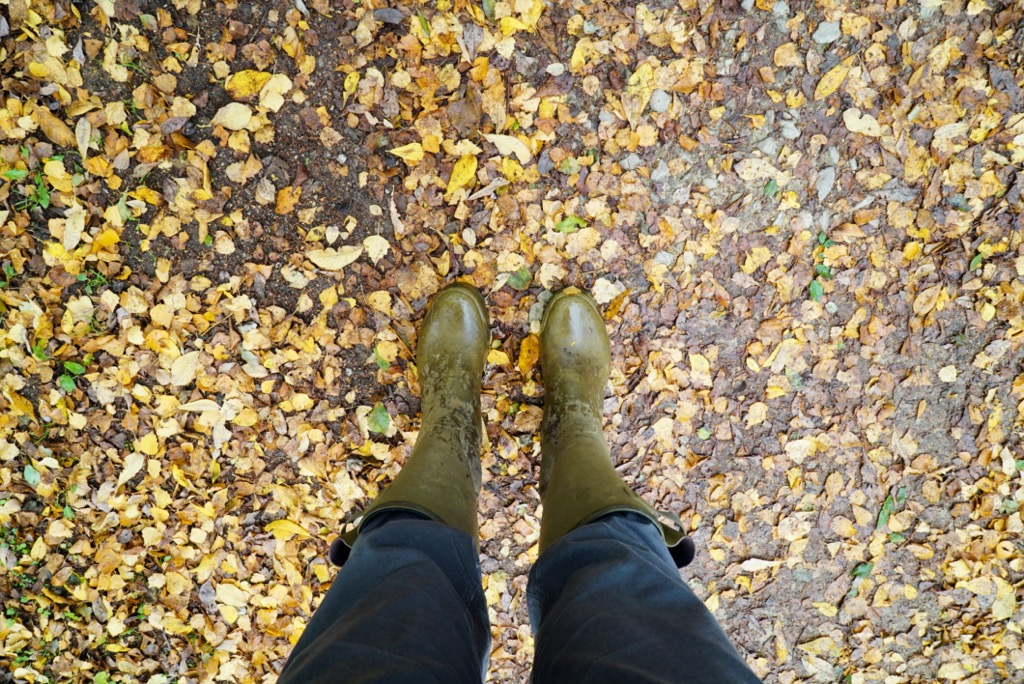
A couple of yards on and I stopped to admire a newly-laid hedge. Hedgelaying is a country craft which has been practised for hundreds of years (says the National Hedgelaying Society). The correct management of our hedgerows is essential if we are to conserve our wildlife and landscape for future generations.
Hedgerows define our countryside and provide many environmental services, but are also vitally important for wildlife as a refuge, a source of food, and as corridors along which they can move through the landscape.
The correct management of hedgerows is therefore vital if they are to survive and be healthy enough to provide a good habitat. Over-management by hard trimming to the same height each year will ultimately degrade the hedge so it is hollow at the base and provide little shelter for wildlife. At the other extreme neglecting a hedge will allow it to become tall and overgrown, eventually even to collapse.
Sympathetic management allows blossom and berries to form, allows the hedge to slowly and incrementally increase in size and keeps the hedge in a healthy condition. Eventually though every hedge needs to be rejuvenated from the base and hedgelaying is one of the best and most traditional ways of doing this. A laid hedge provides a stock proof barrier and a dense habitat for wildlife but most importantly it encourages new growth that starts a new life cycle of the hedge.
Hedgelaying preserves the past and protects the future.
In 1978 three hedge layers – Mr Fred Whitefoot, Mr Clive Matthew, and the late Miss Valerie Greaves realised that soon the valuable skills of hedgerow management that had been acquired over hundreds of years would be lost forever.
These founder members conceived the idea of setting up a national society to enable the skill of hedge laying to be documented, and passed on to others. Competitions were organised all over the country. A national competition is now held every year.

Something I have become aware of in the past couple of years is that once I can put a name to something –a birdsong, a tree, a cloud– I notice it more often and appreciate it more. And so I’m determined that this exploration of one map will involve an effort to learn more about the nature all around me that I know so little about (despite four years studying for a Zoology degree which feels such an inefficient, ineffective use of my time). My favourite professor these days is the Seek app on my phone. It has become one of my favourite walk companions. I pointed my phone at a common reed, wondering what wisdom this mighty AI app would share with me. I’ve seen these plants a million times but don’t even know their proper name! The result: the technical name is actually ‘Common Reed’! 😂 To quote from Landmarks,’Language deficit leads to attention deficit. As we further deplete our ability to name, describe and figure particular aspects of our places, our competence for understanding and imagining possible relationships with non-human nature is correspondingly depleted.’
But what caught my eye was the breakdown of the taxonomy for the reed. It lives in the Family of ‘Grasses’, the Class of ‘Monocots’ and the Kingdom of ‘Plants’. The sprawling immensity of nature, impossible to grasp, ordered and tidied and simplified down to this single, seed-covered plant in front of me. This I could begin to comprehend. And so too with my deliberately-chosen boring grid square, on my single little map, in some corner of England, that is part of the UK (for now), and part of Europe (for now) and part of Earth, and part of our solar system, and on and on until my head explodes with that fabulous picture showing 265,000 galaxies, many of which are so far away that their light has taken billions of years to reach us.
(For a far more thorough and articulate exposition of this sense of awe and wonder, read Pilgrim at Tinker Creek by Annie Dillard. It is one of that small number of books I have read whose message has stayed with me for years, right back since I first read it cycling through the awfulness of a dark Siberian winter.)
In other words, faced with the literally impossible options for exploration, I might as well begin right here, right now with this damp footpath before me. I felt a swelling of astonishment (that sounds like hipster hyperbole but it is true) at the thought of so much nature, so many places to go, so many thoughts racing through my mind. Do I contradict myself? Very well then I contradict myself, (I am large, I contain multitudes). Who came to this random spot to graffiti, and why? Who fly-tipped six black bin bags here (and why) rather than back on the road where it would have been much easier? Who built a bench here? Who made the effort to gravel a small path, to cut branches to line the path and peg them down? To order, pay for, lug, and install the solid 3-bar aluminium bench I’m sitting on now? I get my flask of coffee from my rucksack and begin to sip it – for the warmth not for the caffeine, for my brain seems to be buzzing quite enough as it is! Who chose to face a bench over a tangle of brambles, a pea green stagnant ditch and a massive pylon…?


And then I notice a small plaque on the bench to ‘Brian R Macknish, a tireless campaigner for the canal‘ and I realise that I am looking at this all wrong. I am sitting on the bench the wrong way, and what I should be looking at is behind me. What I’d dismissed as a polluted ditch is in fact an overgrown canal [more of which in future grid squares]. So I swivel round on the bench and notice now that the scrub has been cleared to allow a view of the canal, lined with bullrushes (and a spiked metal security fence). I feel thrilled to be here on this murky, cold November morning, dank and grey, Trump v Biden still undecided, our own history of tribal dispute due to be remembered, remembered this evening with bonfires and fireworks. Some people believe that Guy Fawke’s Night evolved as a Protestant replacement for far older, pagan rituals marking the onset of winter with a celebration of fire, light and warmth, whether the Gaelic Samhain or the Welsh Calan Gaeaf.
As I am taking all this in, my bum growing cold on Brian’s metal bench, a plump man in his 50s cycles past in specs and hi-vis along the gravel path. He has Tom Wait’s unmistakeable gravel voice playing from a speaker and the cyclist sings along. He does not notice me. I smile at the break in the silence, for nature does seem subdued in this morning’s mist. There’s very little movement or birdsong, just the sounds of a busy forklift truck, occasional reversing beeps, and a train somewhere in the distance. And I still have not yet entered my grid square… Not only that, I’m foiled by a too-wide, too-deep stagnant ditch and am forced to retrace my steps. On the way I pick up a burger wrapper that I passed before but ignored. I care more for this place now.
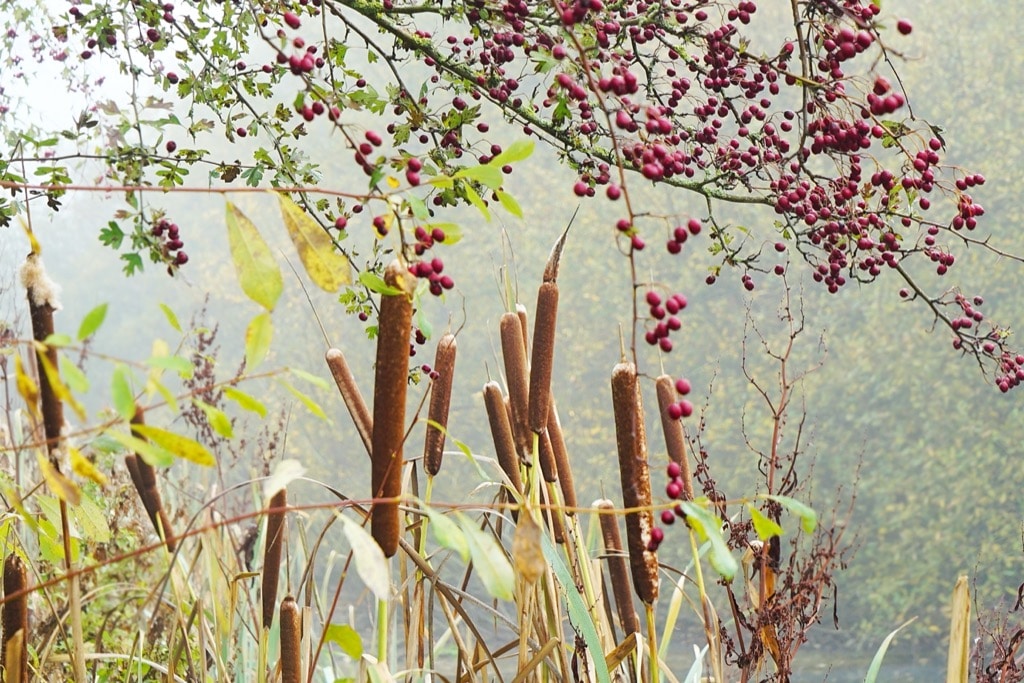

I stop for a coffee at the Little Peckers roadside food van catering to the industrial park, resist the fabulous smell of sizzling smoky bacon, then walk on a different tack, past an abandoned digger whose flaking blue paint, red rust patches, and orange lichen (Xanthoria parietina) comprise a beautiful palette. There’s a fence topped with revolving spikes and a red and white boom barrier guarding the sort of small work units and offices that I would frantically try to escape from rather than break into. Cable tied to the fence is a clear warning to passing Travellers: “…Private Property. It has been in the owners [sic] possession for over 50 years. It has not been sold recently. It is not for sale or rent. No one has any permission to move onto or live on this land. Please report any suspicious behaviour to the POLICE.”
I squeezed through a narrow gap between bushes and a chainlink fence onto a narrow footpath. By its evident lack of use I imagined it might be amongst the 49,000 miles of neglected footpaths in England and Wales which are due to fall from being legal rights of way in 2026. But, at last, I was finally into my grid square!
I pass through a gap where a fencepost has fallen, stepping over the tangling loops of wire to drop down a small wooded slope to a stagnant green pool covered in duckweed (a tiny, quick-spreading plant currently being tested in the US as a stage of treatment for human sewage). I stir the pond with a stick and it bubbles and stinks. It’s so peaceful down here, in this Carlsberg Export-strewn no man’s land, wedged between a railway line, industrial units, drainage dykes, Traveller-repelling fences, the old marshes and an MOD exclusion zone firing range. There is nothing here, and yet there is so much to do, so much to see, so much to photograph, so much food for thought.
A jay screeches overhead as I pause to look at oak galls growing on some young trees. Jays are often spotted near oak trees, and their habit of burying acorns helped the trees spread rapidly after Britain’s last ice age, a mere 10,000 years ago. It is a nice example of symbiosis. A single jay can gather 5000 acorns. Oaks do not generally regenerate in woodland. Whilst acorns do germinate, after a period of usually less than a decade, they cease to be, as they are out-competed by shade-tolerant species, such as hornbeam and beech. Instead, oaks often regenerate amongst thorny scrub, thanks to the jay. When a jay collects only one or two acorns, it may bury them only a short distance from the point at which it gathered them from, but if the jay carries five or six acorns (in its gullet, throat, and beak – the largest being in its beak), then the acorns may be buried thousands of metres away. Once the acorn has been buried by the jay, it will cover the site with soil and leaves, in order to hide it from sight. In order to re-find it, the jay will remember the vertical structures of vegetation in the immediate area – their memory of where they have planted acorns is, in fact, very good.
When a seedling is found from an acorn that the jay had buried, it will pull it up and eat the acorn, before depositing the little seedlng back into the ground rather crudely. This removal of the acorn does however not have a huge impact upon the oak seedling, as the strong and extensive tap root developed rapidly after germination means that the little oak seedling is securely anchored into the ground and can fend for itself, even if the acorn is lacking. Essentially, the uprooting is a trade-off that the oak tolerates well to be able to grow in the full sunlight conditions the jay opts to bury its acorns in.
Meanwhile, the oak galls that had first caught my eye were caused by a different creature, probably a gall wasp. All galls are formed for the same sort of purpose: the deformity is a deliberate mechanism by the gall causer to use the plant for its own purposes. In ecological terms, it’s known as a parasitic relationship. The gall causer manipulates the plant tissue for itself, but the plant receives no benefits in exchange. For more than 1000 years, ink made from galls was the most common in the Western world.
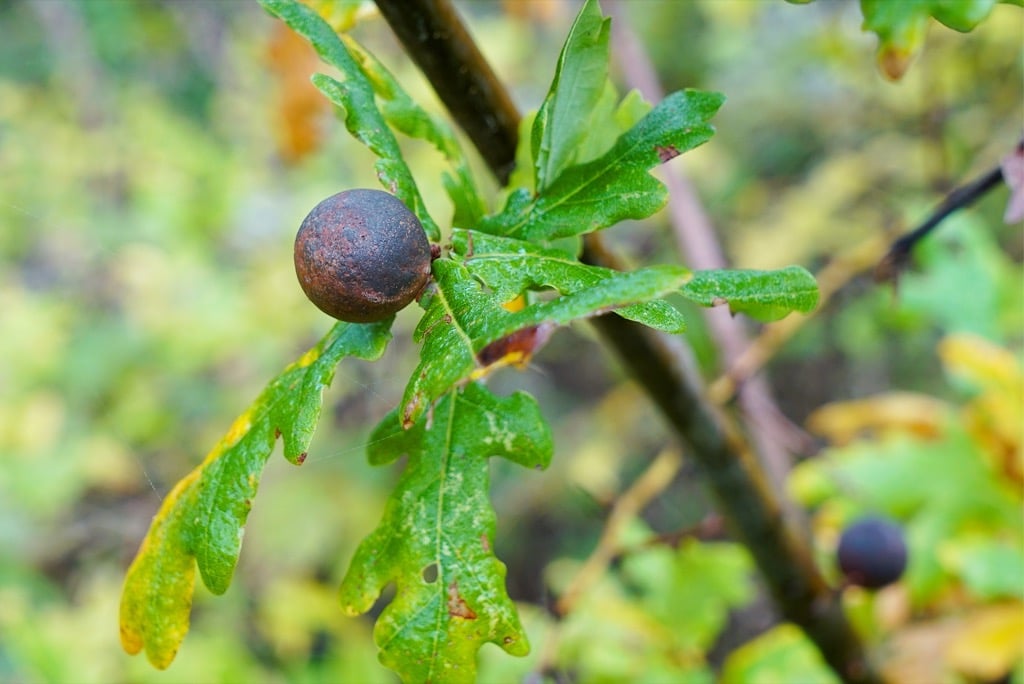

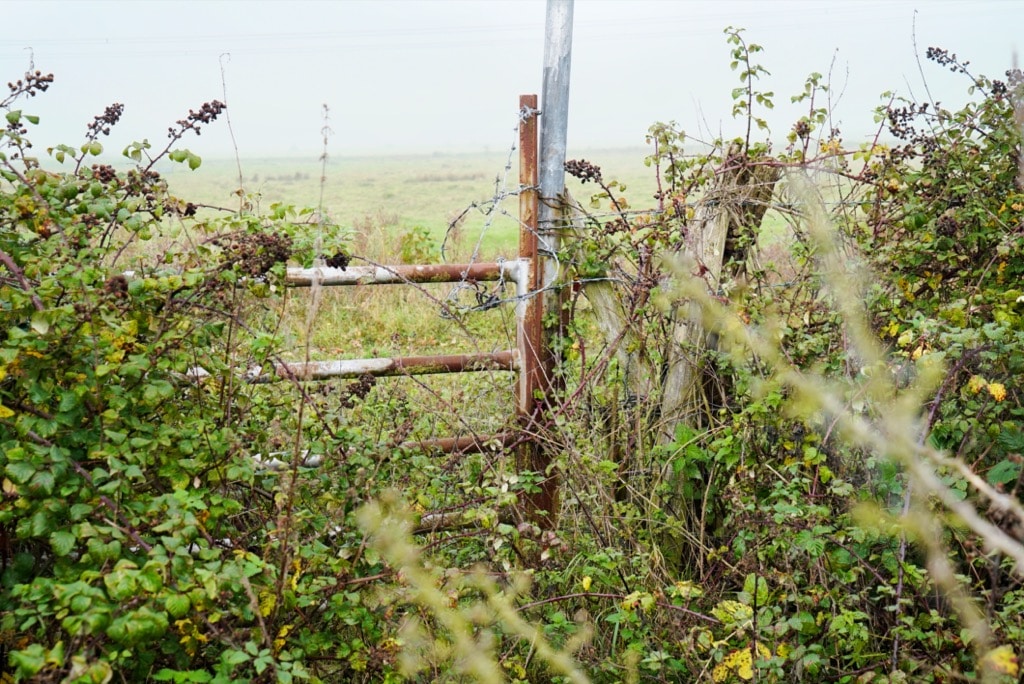
I waded through knee deep, dew-wet grass past purple thistles (and paused to identify Common Toadflax with my Seek app) towards the open grazing meadows of the former marshland that made up most of my ’empty’ grid square. Gigantic electricity pylons marched across the land, coming from the old coal-fired power station on the coast. The station closed as a result of the EU’s Large Combustion Plant Directive (LCPD), which required stations that were not equipped with flue-gas desulfurization (FGD) technology to close after 20,000 hours of operation. Kingsnorth ceased generation on 17 December 2012, having consumed all its LCPD hours. Demolition of the coal handling plant commenced in 2014 with a series of controlled explosions. The 650 ft concrete chimney was demolished by explosives at 10:00 am on 22 March 2018.
Back in 2007, six Greenpeace protesters were arrested for breaking into the power station, climbing the station’s chimney, painting the word Gordon on the chimney and causing an estimated £30,000 damage. They had been planning to write “Gordon, bin it”, but had stopped when served with a High Court injunction. At their subsequent trial they admitted trying to shut the station down but argued that they were legally justified because they were trying to prevent climate change from causing greater damage to property elsewhere around the world. Evidence was heard from David Cameron’s environment adviser Zac Goldsmith, and an Inuit leader from Greenland, both saying that climate change was already seriously affecting life around the world. The six were acquitted after arguing that they were legally justified in their actions to prevent climate change from causing greater damage to property around the world. It was the first case where preventing property damage caused by climate change has been used as part of a “lawful excuse” defence in court.
In December 2008 Greenpeace received a letter from the Crown Prosecution Service revealing that the Attorney-General was close to referring the case of the Kingsnorth Six to the Court of Appeal in an effort to remove the defence of ‘lawful excuse’ from activists. Also in December the New York Times listed the acquittal in its annual list of the most influential ideas that will change our lives.
Why, in that case, the pylons fizzed and buzzed in the disconcerting, brain-frying way they do, I have no idea!

Apart from the pylons the landscape was strikingly flat. Behind me, to the east, were a few distant blue hills. Although only tiny themselves, they looked enormous by comparison with where I stood. I could see the elevated sea wall in the distance, protecting the marsh from the Thames estuary. A silhouetted pony grazed on the grass-banked wall. A dirt bike revved up and down it. The noise, the movement, the human all seemed incongruous on this empty morning. I watched the top half of a big ship slide from left to right beyond the wall, heading out to sea, smoke billowing from its funnel. Where are you going? What wonderful foreign port will you make land in? What will you see there? What will you smell? What cafe will the captain go to for a beer and a smoke and to stretch his legs? The only feature, the only contour line here was the tiny mound of Barrow Hill, named on my map and awarded its own tiny contour ring, a whopping 5 metres above sea level! The barrow was a Bronze Age cist burial site. Thinking that this mound held stories from three-to-five thousand years ago added a sense of wonder to the unprepossessing grassy mound, empty except for an empty metal cattle trough. Back then the mound stood on a gravelly hillock which probably stood out of the water when all the surrounding district was swamp. An archaeological dig here discovered a crouched skeleton and a necklace of beads made from the Cretaceous fossil sponge Porosphaera.

From my vantage point on the ‘hill’ I saw a field of black cows and another of white sheep, separated not by fences, hedges or walls but by a network of drainage dykes. The animals were the only clue that this land is anything other than forgotten ground, in between ground.
My habit, as always, is to hurry. Today, my temptation was to linger. This felt like a helpful gateway into what I am hoping will become my new way of life. A slower way mindset. I don’t have to eat everything at once…
Two crows swooped overhead, calling out. Were they courting? Fighting? Playing? I could hear their wings swoosh as they dropped. So too the creaky wings of a pair of lumbering white swans flying by, and the reluctant take off of a heron I disturbed in a long, straight ditch.

Those drainage ditches foiled my attempt to walk the perimeter of my first square. But with so much emptiness all around I was satisfied that I had a good feel for it. Forced to retrace my steps I turned on some music and picked up my pace. Schumann’s Kinderszenen felt appropriate to the still atmosphere out here on the marsh. I was hungry now, appreciative of the windfall apples I’d gathered earlier from a tree by the railway line. Autumn sunshine was burning off the early mist now. I saw the distinctive swoop of a green woodpecker and listened for its laughing call. Less easy for me to identify was either a weasel or a stoat that dashed across my path. (They do say that telling the two apart is simple: a weasel is weasily identifiable, whereas a stoat is stoatally different…)

And that was that. I was back to where I started, with a dinged car, a bunch of photographs, and a whirlwind of first impressions. This was the first square of my experiment to explore just a single map. I had deliberately selected the most empty looking square on my map to kick things off. But what impressed on me most of all, with 399 grid square still waiting for me, was the sense of abundance. An abundance of places, of learning, and of beauty. It was a fine beginning.
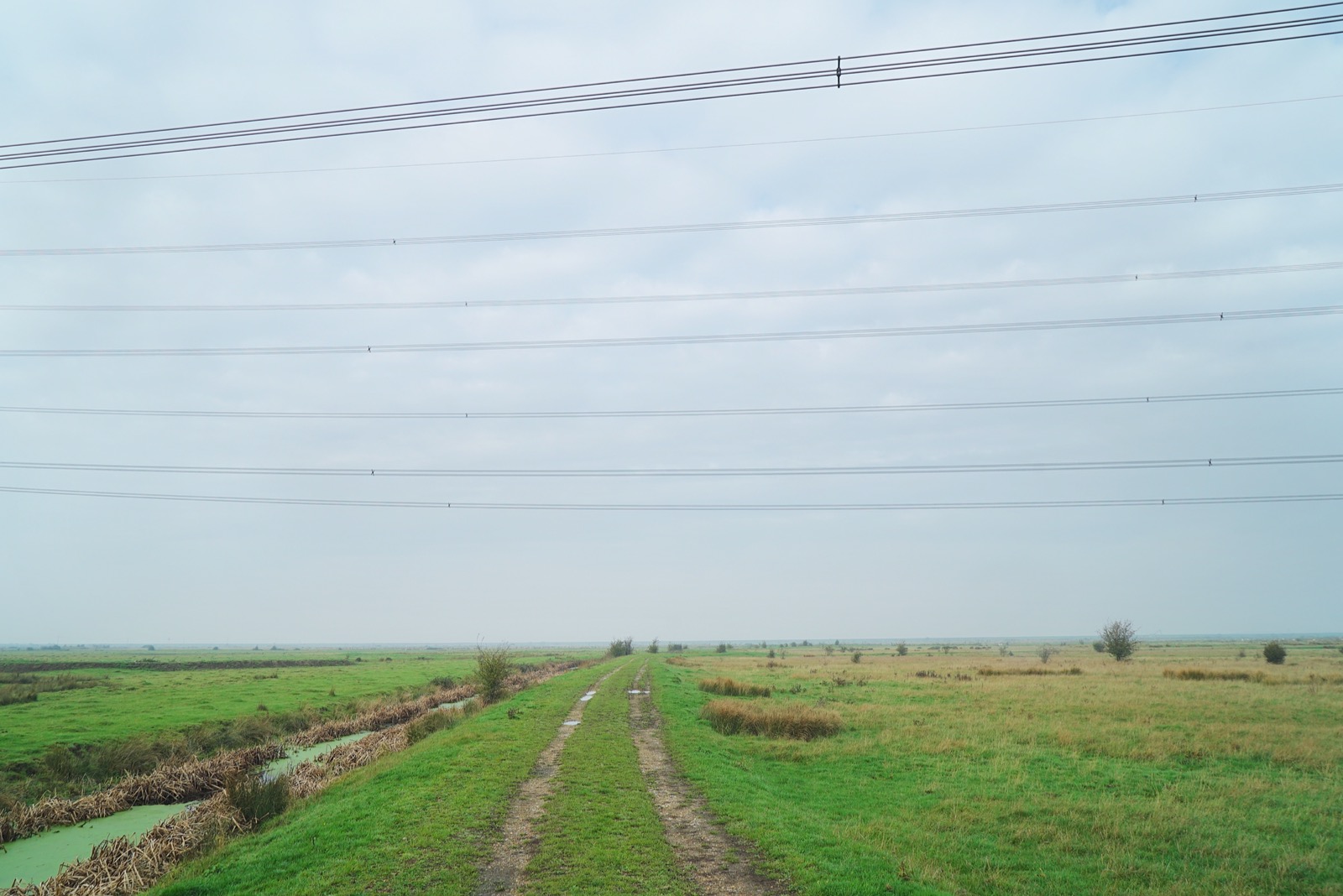



This is fabulous and I love that you’re narrating it like this. Magic.
Thank you!
I always thought a weasel was weasily distinguished, but a stoat was stotally different.
Seek is great isn’t it, I was amazed to identify poison hemlock in the summer!
What a great idea!.. I look forward to hearing more about the single map adventures!
Love this! Already started to think about what I can discover in my locality. Thanks
A lovely read, can’t wait to see more of this series!
I love your attitude. It’s been a year where I’ve discovered fabulous long walks around my home (bang in the middle of South London) when I thought I already knew the area really well, being the owner of a very enthusiastic border collie. Also a year where I feel we all need to rediscover that much maligned and seemingly not so old fashioned virtue of counting our blessings.
Really enjoyed reading about the first day of the adventure and the extra stories around the places… although it may destroy some of the air of mystery the Shipfinder Lite app which is free may have told you where the ship was headed!
This is really fantastic, besides putting your car in the ditch. I also wish I was a better local botanist, and will be adding the Seek app to help me learn more on my long dog walks.
Good idea and great description – just remember to look up as well – you’d picked an area of big skies and they are just as interesting to enjoy, as well as being a bit rare in the South East of England (try Hampshire)…
Good point!
Love this Alastair, beautiful concept and observation x x
Fabulous idea.
When is Day 2?
Here – https://alastairhumphreys.com/asinglemap-2/
A nice idea to realise Al. It’s also given me xmas present ideas for the majority of the family. Reading about you picking up rubbish, have you come across Trash Free Trails (https://www.trashfreetrails.org/)? A dry version of the venerable Surfers Against Seeage
I’ll check them out. Thank you.
Oooh good luck with this, as a fellow Dalesman (in that there London) I always find it odd that the entire landscape can be obscured by a tall hedgerow.
What an engaging read. Just like you described yourself, I too tend to prefer speed, but I found myself stopping to picture what your were describing in your first square of adventure and feel compelled to look into getting a map for my local areas. What a wonderful idea.
Wow! What a brilliant idea. I might do a thorough indoor study for now of Exp148. Now that I have found you, I shall be looking out for more interesting writing from you. BTW, I enjoyed locating your square. Perhaps you were here TQ 70554 74507
Ha! I hadn’t thought of this as an espionage challenge – I like that idea!
I hope you get a map and explore it. I’m loving it.
This is so dense with information and experience! And I had never heard of the Seek app. Downloading it now.